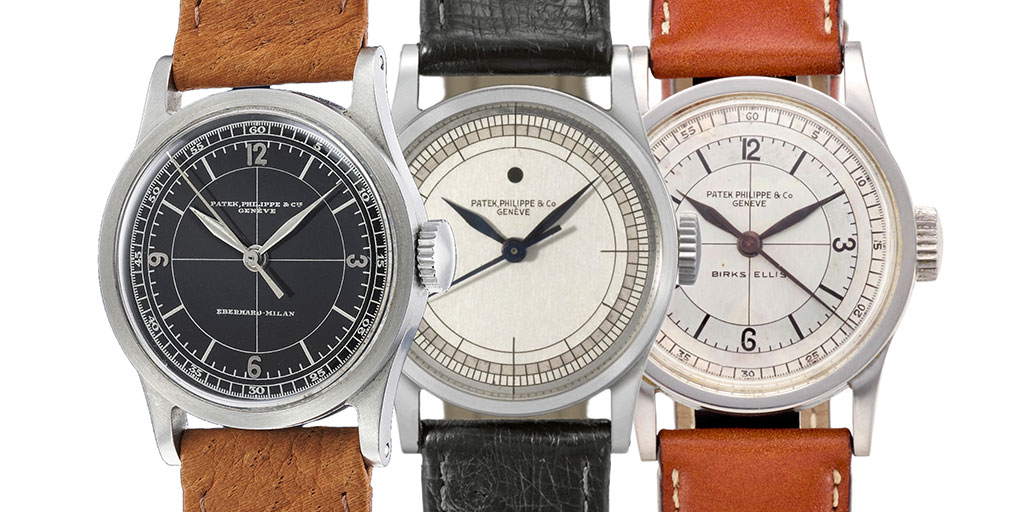Ninety-six. Even the reference number is simple and clean. Introduced in 1932, the Patek Philippe reference 96 “Calatrava” was its first serially produced wristwatch, and the Stern family’s first major project after acquiring the manufacture.
For decades, collectors have pursued the ref. 96 for its elegance and restraint, for its experimental phases and its wide-ranging variations. But today—when scholarship is deeper, condition matters, and aesthetics are viewed through a modern lens—the question isn’t why collect the ref. 96. It’s how.
This is our Collector’s Guide to the Patek Philippe Ref. 96. Collecting the ref. 96 requires a blend of taste, curation, and caution. There are nearly limitless variations, with movements that span from the early Jaeger-LeCoultre ébauche to the in-house caliber 27-AM-400. There’s also polishing, refinishing, and cleaning when it comes to condition. Every so often, a special, untouched example that seems like it’s been pulled out of a time capsule comes along.
These are all important distinctions, not just for the sake of acquisition, but for appreciation. Because to collect the ref. 96 is to collect the blueprint of not only modern Patek Philippe, but of all modern dress watches. Understanding this blueprint—its subtleties, its enduring appeal—is essential for any collector of vintage watches.
What Is the Patek Philippe Ref. 96?
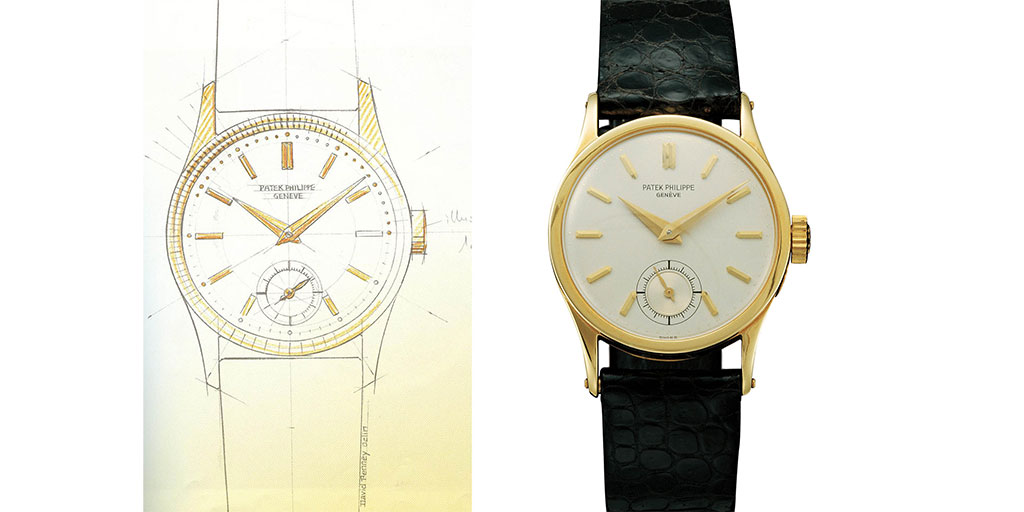
The Patek Philippe ref. 96 is a time-only watch with a three-piece case measuring 30.5mm, made by Antoine Gerlach (precious metals) or Taubert (stainless steel). Yes, it’s small and it’s not for everyone, but for those who love the ref. 96, this size is part of its charm.
You’ll see cases in yellow, rose, or white gold, platinum, stainless steel and two-tone. It features a wide, flat bezel, simple integrated lugs that curve slightly, and a closed, snap-on case back. Patek Philippe produced the ref. 96 for about 40 years, from 1932 until 1973. (It was not, as we’ve covered, designed by Englishman David Penney.)
Collector’s Tip: The ref. 96 spans much of Patek Philippe’s vintage era, which means it’s important to understand general principles of collecting vintage Patek Philippe. For example, Patek Philippe transitioned from the long “Patek Philippe & Co./Cie” signature to the short “Patek Philippe” signature around 1948. These signatures are engraved and then inlaid with enamel—the condition of this hard enamel greatly impacts the collectability and value of a ref. 96.
The name “Calatrava” was a marketing invention that came long after the ref. 96. Still, today the ref. 96 is considered the quintessential Calatrava, with most that have since become part of the collection-making reference to its defining features.
Introduction to Collecting the Ref. 96
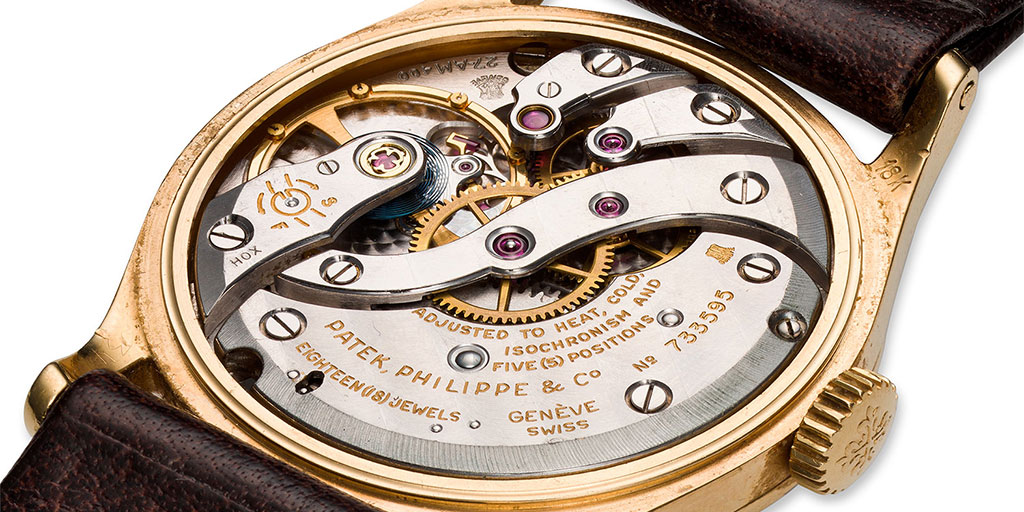
The ref. 96’s simplicity belies not only the craft and design within, but also its importance to establishing the foundation of modern Patek Philippe. Most importantly, it would house the manufacture’s first in-house movement, caliber 12-120. As we’ll discuss, the dial also used various techniques that came to define Patek Philippe’s mid-century craftmanship. Finally, the case has a simple three-piece construction—the tapered lugs are integrated into the mid-case to create a seamless design.
96: Movement and Series
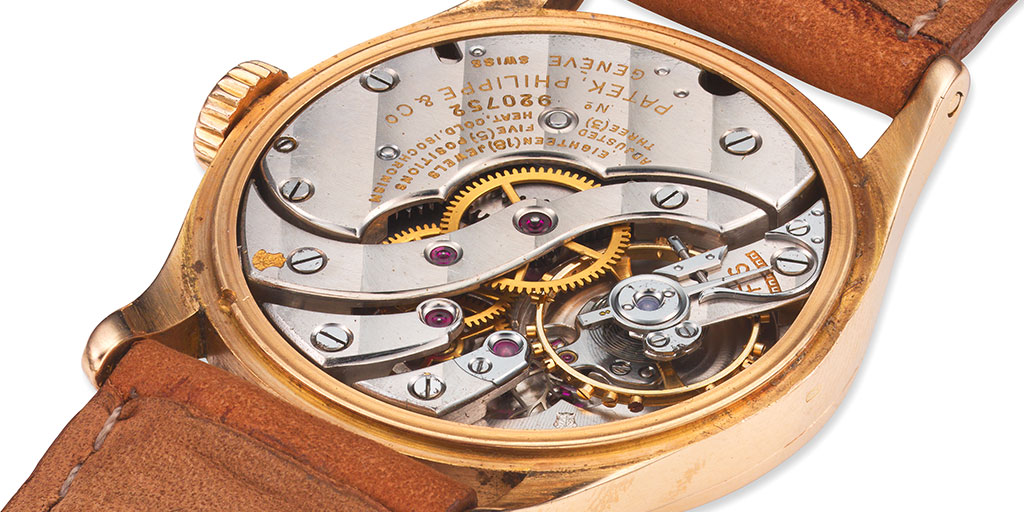
Today, the ref. 96 can be divided into four series by movement:
- First Series: LeCoultre 12” caliber (1932~1935)
- Second Series: Patek Philippe caliber 12-120 (1935~1952)
- Third Series: Patek Philippe caliber 12-400 (1950~1961)
- Fourth Series: Patek Philippe caliber 27-AM-400 (1960~1973)
There are small seconds and center seconds versions of each, and even some with an offset seconds at 9 o’clock (drool) or no seconds-hand at all.
Patek Philippe had purchased the caliber LeCoultre 12” ebauches in the 1920s, intending to use them for its Gondolo watches, but the Great Depression halted those plans.
After acquiring Patek Philippe, one of the Sterns’ early hires was Jean Pfister as technical director. He brought his engineering discipline to the manufacture, ushering in a new era of in-house technical development for Patek Philippe. While complicated watches like the refs. 1518 and 1526 get all the attention, the time-only calibers were perhaps most important in bringing stability to Patek Philippe during a turbulent time. Like many Patek Philippe wristwatches of the era, early ref. 96s relied on supplier ébauches, in this case from LeCoultre.
But by the mid-1930s, Patek Philippe began transitioning from its reliance on suppliers to producing its own high-grade calibers. The caliber 12-120 was the manufacture’s first in-house caliber, a manual-wind movement with beautiful architecture, sweeping bridges, and artisanal finishing. It was designed with the fourth wheel at 6 o’clock to drive the seconds hand directly. Finger bridges hold the fourth wheel and escape wheel, with a curved bridge across the middle of the movement holding the second and third wheel. The regulating organ features a Breguet balance spring and swan neck regulator. This architecture offered plenty of space for finishing and embellishment, particularly anglage on the bridges.
It’s a beautiful, yet functional movement, a statement of Patek Philippe’s intent as a manufacture.
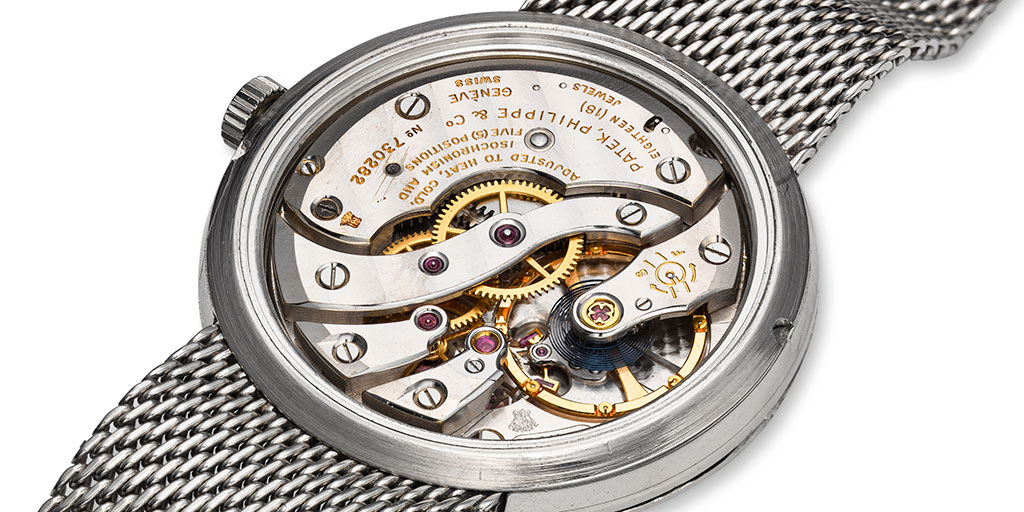
By 1950, Patek Philippe began transitioning from the caliber 12-120 to the updated caliber 12-400, which added shock protection and other slight tweaks to make the movement more robust.
Towards the end of the ref. 96’s production run in the 1960s, Patek Philippe introduced the caliber 27-AM-400, which brought additional modern updates, including a soft-iron case for anti-magnetism and Patek Philippe’s patented “Gyromax” balance.

Center Seconds
While we take it for granted today, early movements like the caliber 12-120 were designed for subsidiary seconds, with the gear train terminating at 6 o’clock. By 1939, Patek Philippe introduced the caliber 12-120 SC (for “seconde centrale”), adopting an indirect center-seconds module from Victorin Piguet, which uses three additional gears to bring the seconds hand to the middle.
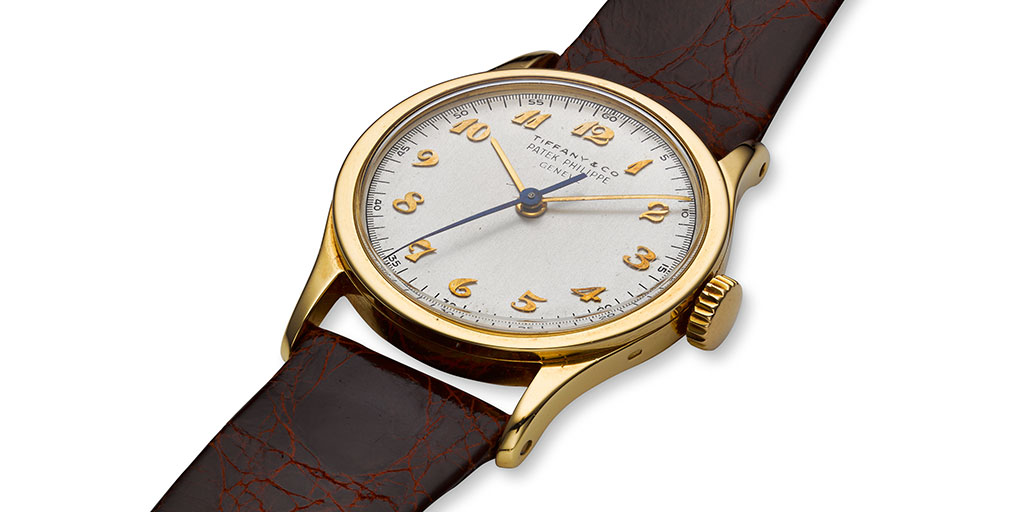
Collector’s Tip: Early ref. 96 examples can be found with both center seconds (“96 SC”) and small seconds. In 1949, Patek Philippe introduced the ref. 2457 to replace the ref. 96 SC. It features the same case as the ref. 96, but used the new caliber 27 SC, which features a direct center seconds, with a clever architecture that puts the second and fourth wheel on the same plane. According to dealer John Nagayama, only one known example of the ref. 2457 uses the previous caliber 12-120 SC.
These early, manually wound calibers are a pure expression of Genevan watchmaking. Small finger bridges contrast with large, sweeping bridges; the regulating organ puts precision first, but also provides the perfect canvas for black polish. The ultimate in functional elegance.
Patek Philippe Ref. 96: Dials & Variations

Produced from 1932 until the 1970s, the ref. 96 was expressed through a wide variety of dial configurations. It features all kinds of indices—applied or printed, Arabic, Breguet, or Roman numerals, precious stones. There are dauphine, baton, pencil, spade, and leaf hands. Luminous and non-luminous treatments. There are retailer signatures, and local tastes dictated case and metal preferences.
Because of the variety of configurations, condition, and other attributes, ref. 96 prices vary a lot. You can find one for $10,000 or $100,000, and anywhere in between.
Collector’s Tip: The wrong question to ask is “What’s the cheapest ref. 96 I can buy?” You probably don’t want the cheapest ref. 96. At any given time, you can find a few standard yellow gold ref. 96 examples in subpar condition under $10,000. But a ref. 96 in strong condition with other attributes that make it collectible is much harder to find.
Perhaps the best way to understand how to think about collecting the ref. 96 is to start at the top.
Rare and special examples of the ref. 96 have long been coveted and collectible. While you might not be in the market for a $100k+ Calatrava, record-breaking results help us understand what collectors value most.
Here are the 12 highest public auction results to date for a ref. 96 (the list started at 10, but we remembered a few results from the past several months!). Also note that these results span decades, with the second-highest coming back in 2001, not to be topped until 2020. While it can feel like the Patek Philippe ref. 96 is “on trend,” special examples have always been collectible.
You’ll see there’s an emphasis on interesting dials: Sector or scientific layouts, enamel, Breguet numerals, and other examples with provenance. Movement series doesn’t seem to matter as much.
Collectors also love stainless steel: Six on this list feature steel cases. In other words, a steel ref. 96 with a sector dial is almost guaranteed to see a big result.
Top 12 Patek Philippe Ref. 96 Calatrava Auction Results
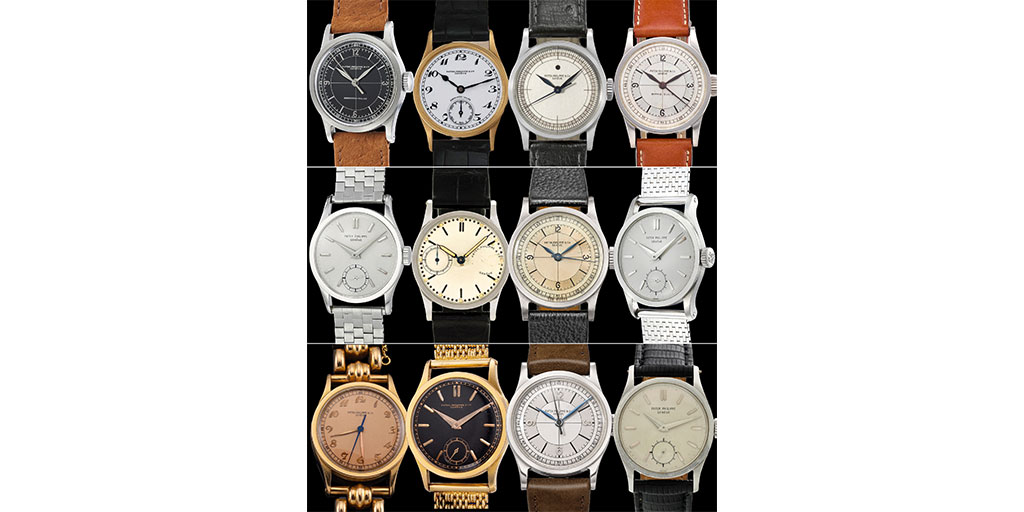
Steel, Black Sector Dial “Eberhard”
Phillips (November 2020): CHF378,000
Gold, Enamel Dial Breguet “Eberhard”
Antiquorum (November 2001): CHF 333,500
Steel, “Margraf” Three-tone Dial
Christie’s (May 2008): CHF 238,600
Steel, Sector Dial “Birks Ellis”
Bonham’s (October 2021): $256,562
Platinum on Gay Freres Bracelet
Phillips (May 2019): CHF 137,500
Steel, Observatory Luminous Prototype
Antiquorum (March 2014): CHF 111,750
Christie’s (May 2019): CHF 97,500
Platinum, for Winner of Holst-Knudsen Award for Scientific Research
Phillips (November 2020): CHF 88,200
Segre Subastas (July 2024): €82,500
Christie’s (May 2025): CHF 81,900
Phillips (May 2025): HKD 622,300
Platinum, for Winner of Holst-Knudsen Award for Scientific Research
Sotheby’s (December 2021): $75,600
(We’re talking about time-only ref. 96s here; the handful of World Time and calendar examples are in another league.)
Collector’s Tip: Note these all have an Extract from the Archives confirming the dial. Instances can be found of similar dial configurations selling for much lower when they’re offered by a seller who has confirmed a dial was swapped, or that Patek Philippe will not provide an Extract from the Archives.
These stratospheric results illustrate what’s particularly valuable in a ref. 96. As you start to remove these elements, prices start to come back to Earth. After steel, other features or combos that are desirable across vintage Patek Philippe also make for a beautiful ref. 96: pink-on-pink, black dials, an early long signature.
By the time all the fanciest and most “desirable” traits are removed, we’re fully grounded in the essence of the ref. 96: A yellow gold case with a silver opaline dial, sharp dauphine hands, and applied markers. There’s nothing particularly noteworthy about it, except for the fact that, if you, your grandparents, or your grandkids, closed their eyes to picture a round wristwatch, this is what they’d see:
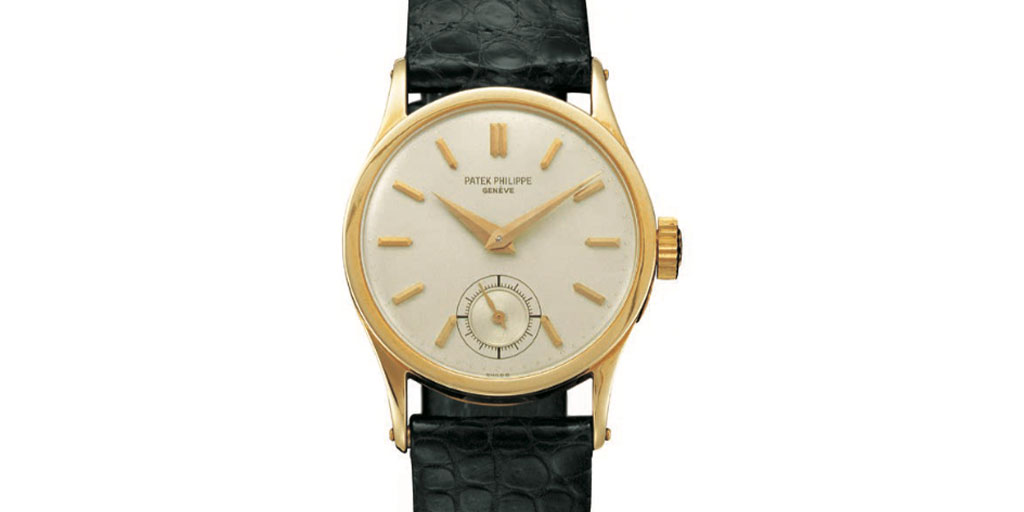
Ref. 96: The Market in 2025
Over the past few months, it might feel like the Patek Philippe ref. 96 has become the “hot” watch again. But that’s only if you haven’t been paying attention. A new generation of collectors is perhaps discovering what previous generations already knew: The ref. 96 is one of the most important watches in the history of perhaps the most important watch brand.
While the ref. 96 fits neatly into a “trend” towards smaller, dressier watches, this sells it short. Special and rare variations of the ref. 96 have always been recognized as such.
While there was a time (c. 2020-2022) when everyone seemed to want the same steel sports watches, the ref. 96 represents a different kind of collecting. It’s nearly impossible to catalog every configuration—there are literally hundreds, if not thousands, from its 40-year run.
Generation after generation, it hits a sweet spot for collectors: Historically important, but with so much variety that even the most seasoned dealers and collectors are always learning and discovering something new. Collectors tend to prize the “first” of anything, and the ref. 96 is one of the most important firsts of all.
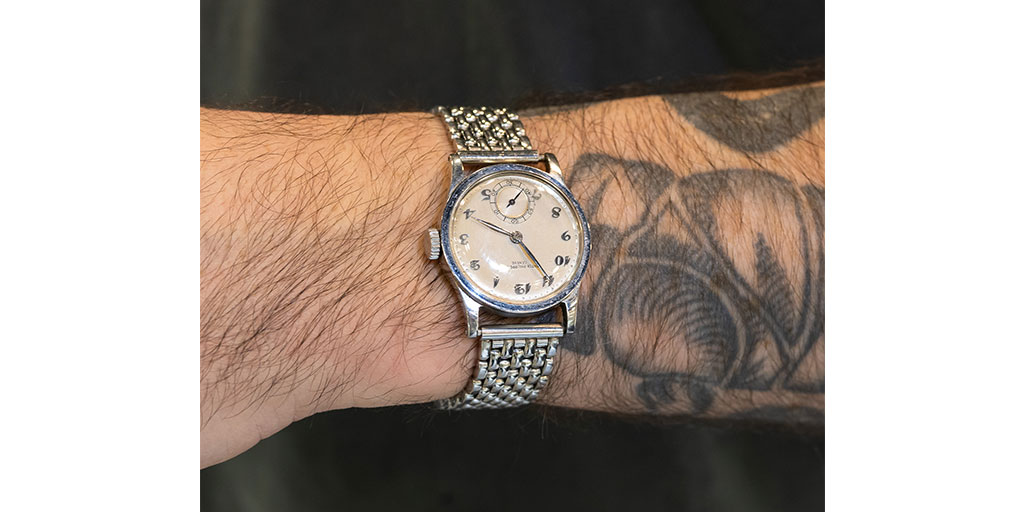
While collectors have always collected the ref. 96, I have noticed more people just wearing and enjoying the ref. 96 lately. Perhaps it fell out of favor as an enjoyable everyday watch for a minute. But like pleated pants, it always comes back.
Perhaps the best way to understand the current market for the ref. 96 is by looking at a few recent big results:
Ref. 96 Steel Sector Dial First Series
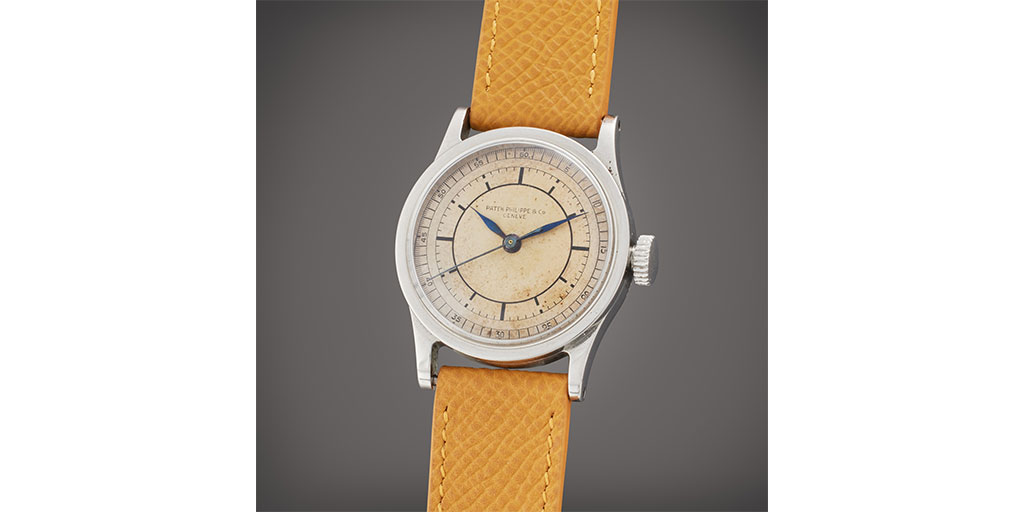
In June 2024, a stainless steel ref. 96 with sector dial, from the family of the original owner sold for $45,600 at Sotheby’s New York. While the movement and dial weren’t in pristine condition, it was a strong result for a rare, fresh-to-market steel Calatrava (see above).
Ref. 96 Pink-on-Pink Breguet Second Series

In July 2024, a pink gold ref. 96 with matching pink gold dial sold for €82,500 (~$89,000). It popped up at a small auction house, which shows how almost no ref. 96 can sneak under the radar today (see above).
The pink dial was in excellent condition, and while the case had been polished, it had strong hallmarks, even showing an interesting Portuguese import hallmark on the top left lug.
A Seemingly Simple Yellow Gold Second Series Ref. 96
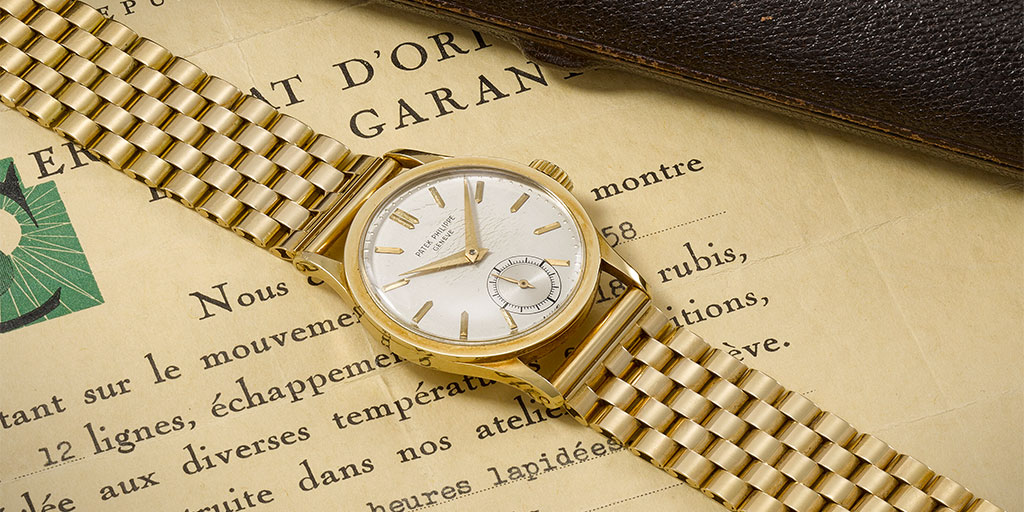
But it’s not all Breguet numerals and sector dials nowadays. In May 2025, a simple yellow gold ref. 96 with a silver dial sold for CHF 44,100 (~$54,000) at Christie’s Geneva (see above). Look closer and you’ll see it’s in pristine condition, and from the family of the original owner. It also had its Certificate of Origin (from 1949!). You can see crisp hallmarks on the lugs and case back, which are often polished away over the years. This shows how it’s not just those rare, special, sector dials that grab the attention of collectors. Condition is the new rarity.
Comparing this result to other ref. 96s in the same sale shows the increasing premium for condition:
- A stainless steel example with Breguet numerals in less pristine condition sold for the same price
- This ref. 96 example with a heavily restored sector dial sold for just CHF 12,600.
A Brief Flashback to 1989
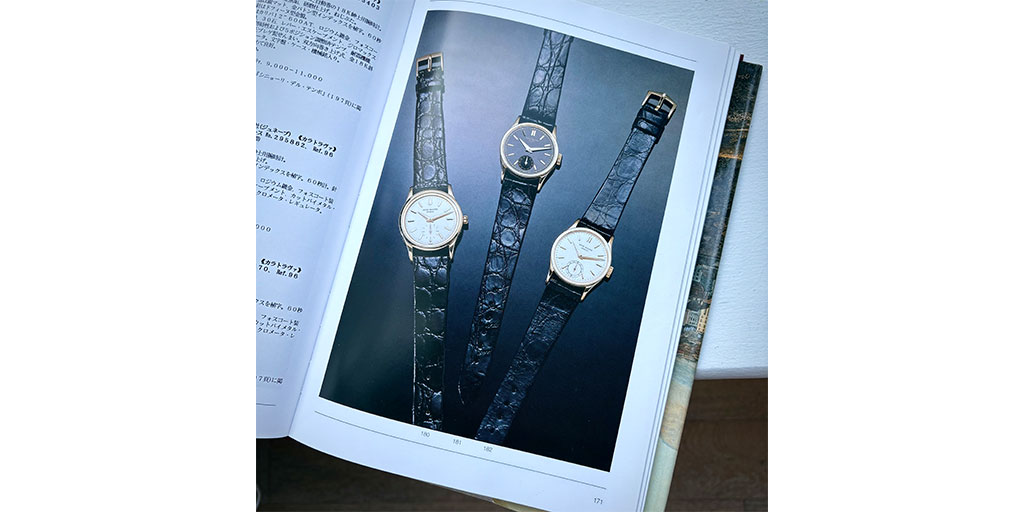
Let’s time travel, briefly, back to 1989, to Patek Philippe’s 150th anniversary and the celebratory Art of Patek Philippe auction. Flip through the catalog and you’ll find six ref. 96 examples. They range from “special” to “standard,” and illustrate how the market has changed:
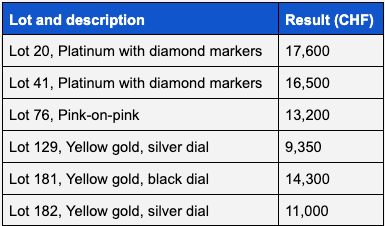
While the “special” examples (lots 20, 41, 76, 181) all sold for a premium compared to the yellow gold/silver dial, it’s nowhere near the multiples we see today (recall the black dial that just sold for $80k). In fact, you could probably pay around the same price for a yellow/silver ref. 96 today. But those special variants have exploded in value.
It illustrates what I think is a broader trend in collecting: Growth in prices for special variants, whether that’s based on rarity or condition, continue to rapidly outpace the growth of relatively common examples. (For example, we also observe this with the ref. 3970, where the difference between First Series or other “special” dials continues to outpace standard or later ref. 3970s.)
This is thanks in part to an increase in knowledge and information that helps to contextualize just how special some of these watches can be.
Ref 96 Bracelets and Straps

As we’ve seen, the ref. 96 was typically delivered on a leather strap with a Patek Philippe pin buckle. As you’ll see on some of the watches shown in this article, unsigned or non-original bracelets were sometimes added by owners or even retailers.
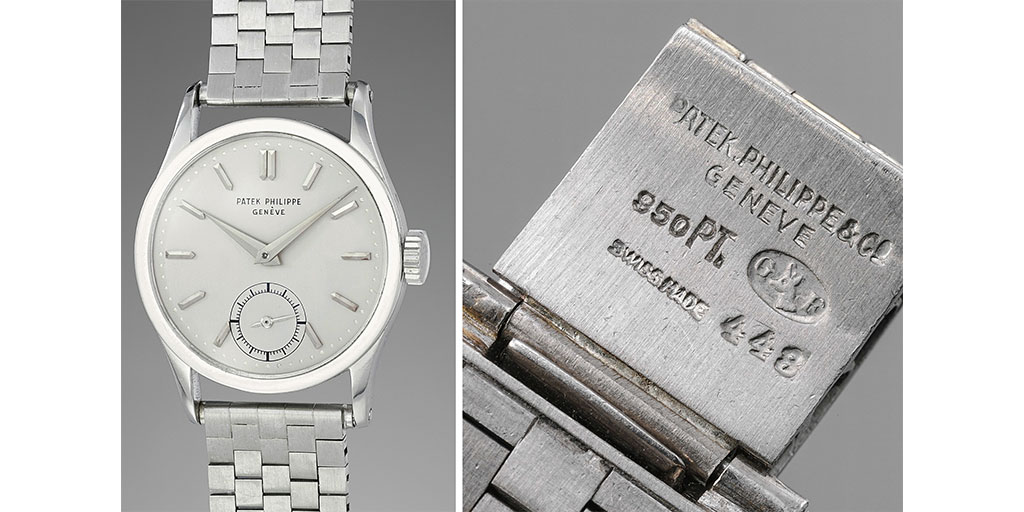
You can also find ref. 96 examples with original, Patek Philippe-signed bracelets. For example, this platinum ref. 96 (see above) featured its original, matching platinum bracelet. It’s signed by Patek Philippe and Gay Frères on the clasp. Gay Frères was one of the most important bracelet makers for Patek Philippe (and other brands) through the 20th century, so its bracelets always command a premium. As with the dial, it’s a bonus when the Extract from the Archives confirms a watch was originally delivered on bracelet.

Nowadays, a matching, period-appropriate bracelet from Gay Frères or other makers can enhance the look of a ref. 96. It also increases the wrist presence of an otherwise diminutive watch!
Ref. 96 Dial Techniques and Condition

Ref. 96 Engraved Enamel
Beyond configuration, it’s important to understand the basics of condition when it comes to the ref. 96, as these differences increasingly mean huge price variations.
First comes the dial. Until the 1980s, Patek Philippe used engraved enamel dials. This was a time- and labor-intensive technique that featured in Patek Philippe’s watches through the mid-20th century, largely giving way to pad-printing and other more cost-effective methods. For this reason, these hard-enamel dials are particularly sought after by collectors today.
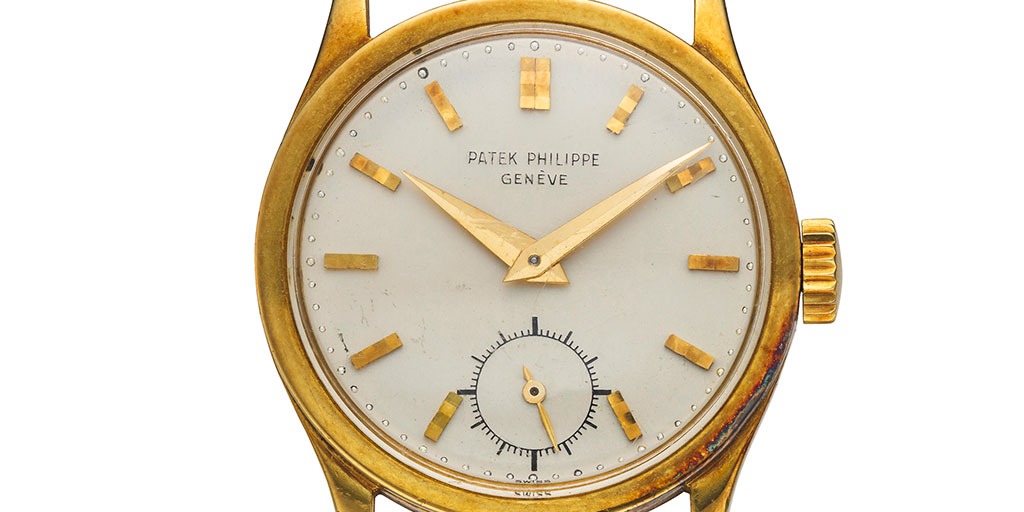
These dials feature the brand’s signature, markers, and tracks engraved and then filled with enamel. The process involves first tracing these marks onto a dial blank. These are then hand-engraved into the dial at a depth measuring just tenths of a millimeter. These engravings are then filled with enamel, before heating the entire dial under high heat. For the “Patek Philippe” signature, this gives a slightly raised effect.
The result is a dial with a signature and markings meant to endure for generations, with the hard enamel extremely resistant to wear or cleaning. While enamel can be lost during standard cleanings, it’s more durable than other common techniques.
For example, the top of the “A” in PATEK PHILIPPE and the accent above the “E” in “GENÉVE” are known to be vulnerable to fading over the years, often a tell that a dial has been cleaned. To be clear, it’s not an immediate no-go if a dial’s been cleaned—these watches were designed to be cleaned, and most have been during their long lives—but simply context to have before making an acquisition.
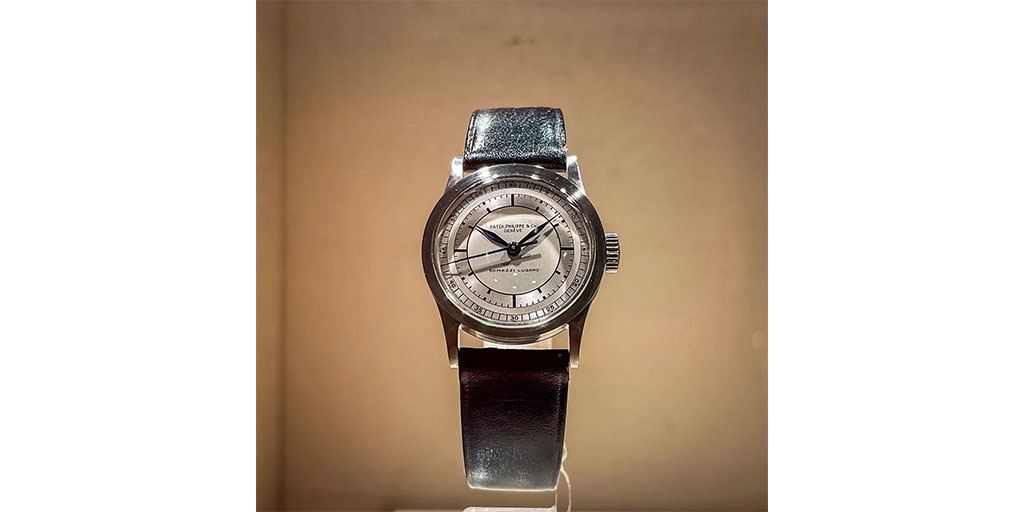
Those sector and other scientific dials are typically entirely hard enamel, which should give you an even greater appreciation for them.
For collectors evaluating a ref. 96, it’s important to get up close with the enamel signature and other markings. Is it original? Is there enamel loss at any vulnerable parts of the signature? Has there been any re-application of enamel? If so, does it look professionally done or sloppy?
Pearling (or perlé) on the Ref. 96
Since the ref. 96 is the very definition of simplicity, it really lets us get into the weeds. In addition to engraved enamel, a dial technique called “perlé” (I like to call it “pearling”) is often used for the outer minute markers.
Pearling uses a special diamond-tipped tool to create small marks that look like pearls. As the tool drills, it reveals the dial’s base color, providing a contrast to its final treatment. This is another artisanal technique that provides depth and character to the dial. Like hard enamel, it’s also fallen out of favor—modern pearling techniques are typically accomplished by machine and have a slightly different visual effect.
Importantly, when dials are cleaned, the abrasive process will often cause these pearls to become larger. After a few cleanings, they can start to look too big–almost inducing trypophobia if that’s a fear of yours.
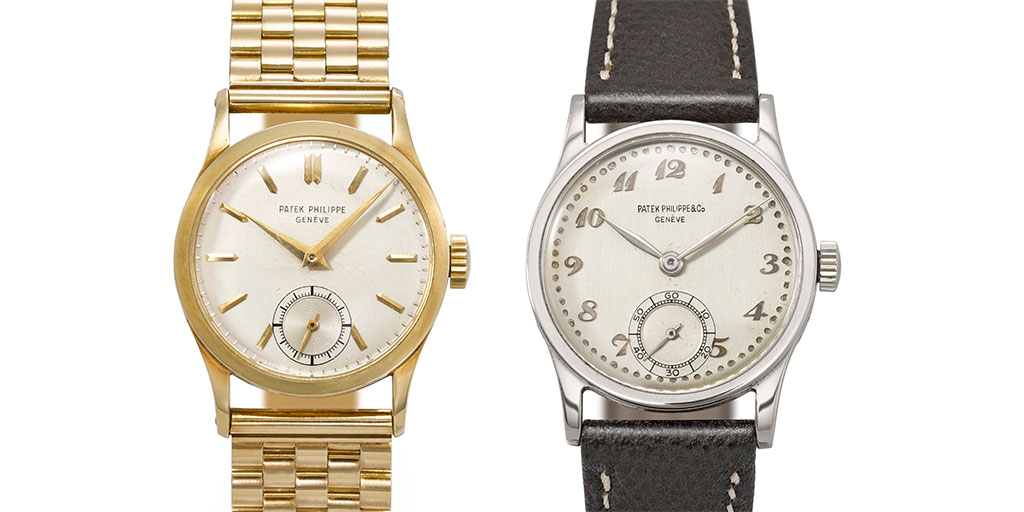
Collector’s Tip: There’s always some subjectivity in evaluating a watch’s condition. One collector’s patina is another’s damage. These two techniques—engraved enamel and pearling—are just two examples that illustrate why evaluating condition is important. It’s not just that a watch in good condition can look better, though the market always attaches a premium to originality. Evaluating and understanding condition also helps us to better value these hand and artisanal techniques that are too often lost to time.
Ref. 96 Case Condition
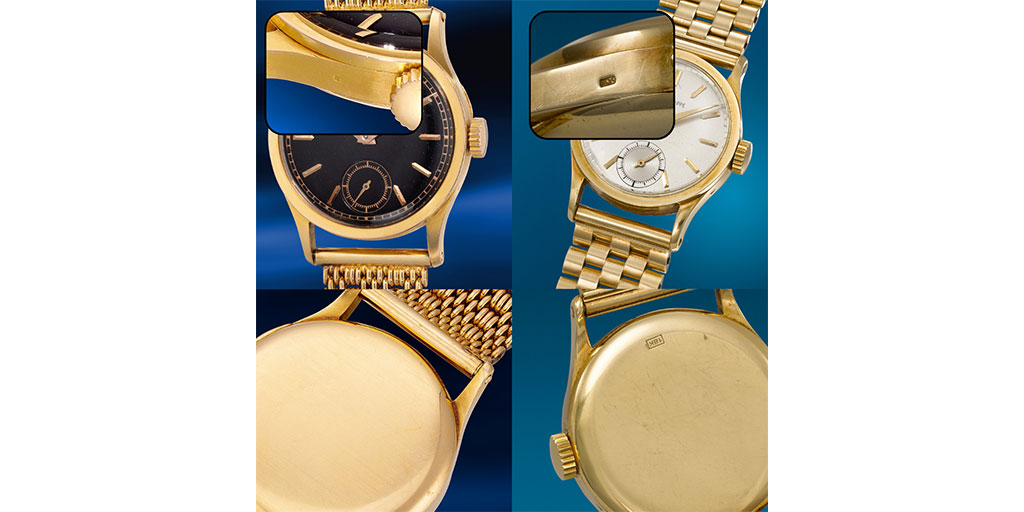
After the dial, evaluating case condition comes next. Beyond looking for the typical crisp lines and lug edges, look for:
- In precious metal examples, hallmarks on the mid case and case back. These have often been polished away over the years, so it’s always exciting to find a sharp hallmark.
- So much of the ref. 96’s identity is in its wide, flat bezel, look for examples that maintain these lines, and where the bezel hasn’t become too thin or rounded.
- The ref. 96’s case can be sympathetic to a polish or two, but since the lugs are relatively thin, they can start to look a bit like “toothpicks” if they’ve been over polished.
All in the Family
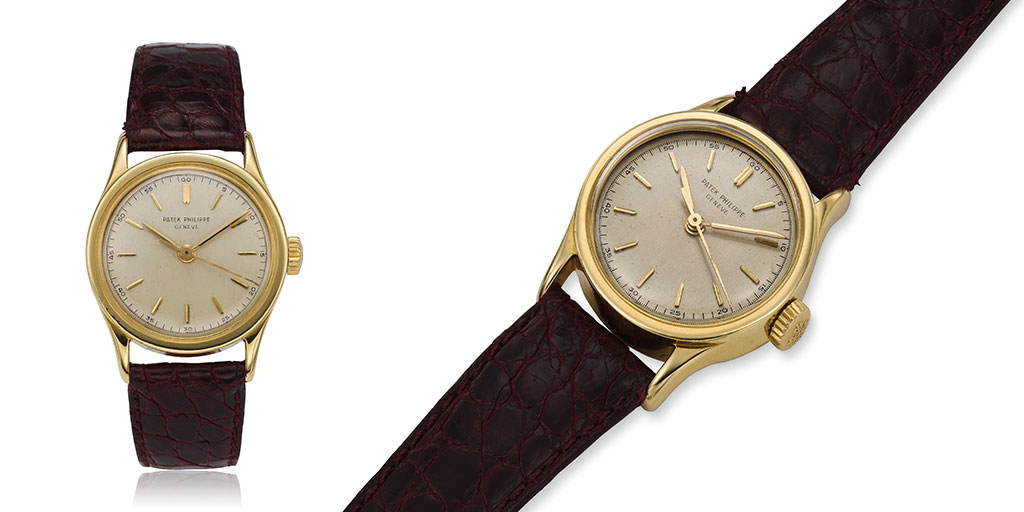
The Calatrava family reunion must be a confusing one. The family tree began branching out by the mid-1930s. First came the ref. 570, essentially a 35mm version of the classic ref. 96. But it didn’t stop there. Soon after this came larger collector-favorite models like the refs. 530, 565, 2508, and others.
In 1935, Patek Philippe introduced the ref. 438, the first Calatrava with a screw-down case offering some level of waterproofing. Featuring a boy-size 28mm case, it otherwise maintains the same design as the ref. 96.
Collector’s Tip: In the 1950s, Patek Philippe introduced the ref. 2545 (and later, the center seconds ref. 2555), which took the design elements of the ref. 96, but put them in a slightly upsized (32mm) two-piece waterproof case. Produced for a short time, these references don’t appear for sale often.
The 96 also has its descendants. In 1982, Patek Philippe replaced the ref. 96 with the ref. 3796. It maintained the same design and compact case but added the updated caliber 215 PS (petite seconds), a manual-wind Geneva Seal movement. For more on the ref. 3796 and other neo-vintage Calatravas, check out our collector’s guide.
Perhaps the most direct lineage you could draw from the original Calatrava to today is as follows:
Ref. 96 (1932–1973)
Ref. 3796 (1982–1999)
Ref. 5096 (1996–1999)
Ref. 5196 (2004–2018)
Ref. 6196 (2025–)
Closing on Collecting the Calatrava Ref. 96
To collect the ref. 96 is to enter the heart of Patek Philippe. It’s not just the first serially-produced Patek Philippe wristwatch—it’s the blueprint for nearly every dress watch that followed. Pure design, modest dimensions, endless variations.
Collecting the ref. 96 demands a trained eye and strong taste. Maybe you’re after rare dials. Maybe it’s all about untouched condition or provenance. Whatever it is, there’s a version of the ref. 96 for you—and probably one you haven’t seen yet.
Most fun of all, the ref. 96 rewards patience and research. A generation ago, it was all about rarity. Today, collectors also hunt crisp hallmarks, hard enamel, and sharp lugs. All along, it’s not the ref. 96 that’s changed—but us.
Tony Traina is the editor and founder of Unpolished, the newsletter for watch collectors. He’s a former editor at Hodinkee and also contributes to GQ, Sotheby’s, and Revolution. He’s a collector who started in watches while a practicing attorney.
June 2025

